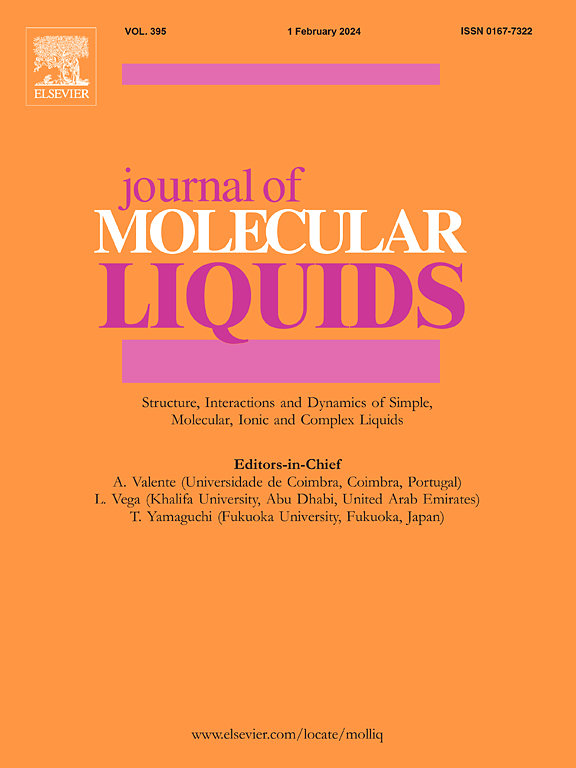Solvent-dependent conformational transitions of poly- and oligo-oxyethylene under strong electric fields: Insights from molecular dynamics simulations
IF 5.3
2区 化学
Q2 CHEMISTRY, PHYSICAL
引用次数: 0
Abstract
During the fabrication of nonwoven nanotextiles by electrospinning, polymer solutions are subjected to intense external electric fields, especially near the tip of the Taylor cone, where electric field lines concentrate. Under such conditions, significant conformational changes in polymers can occur, influencing the properties of the resulting nanofibers. This study investigates the restructuring of oligo- and poly-oxyethylene chains of different lengths – from 1 to 32 monomer units – in response to strong electric fields in two solvents – water and methanol – using molecular dynamics simulations. The findings reveal that very short chains tend to arrange themselves perpendicularly to the applied electric field. However, as chain length increases, solvent-specific effects emerge, resulting in distinct behaviors in water versus methanol. In methanol, polymer coils are compressed in the direction of the electric field, whereas in water they are elongated parallel to the field leading to a prolate shape. We attribute this behavior to the disruption of multiple hydrogen bonds in the region where the polymer coils come into contact with the solvent. This disruption leads to an excess of donor sites from solvent molecules. In water, where there are relatively few unoccupied acceptor sites available, the donor centers remain unbound, prompting the solvent to favor prolate coil conformations with minimal hydrogen bond disruption. Conversely, in methanol, the excess donor centers readily bind to free acceptor sites on oxygen atoms, resulting in the conservation of the oblate shape of the polymer coil.

求助全文
约1分钟内获得全文
求助全文
来源期刊

Journal of Molecular Liquids
化学-物理:原子、分子和化学物理
CiteScore
10.30
自引率
16.70%
发文量
2597
审稿时长
78 days
期刊介绍:
The journal includes papers in the following areas:
– Simple organic liquids and mixtures
– Ionic liquids
– Surfactant solutions (including micelles and vesicles) and liquid interfaces
– Colloidal solutions and nanoparticles
– Thermotropic and lyotropic liquid crystals
– Ferrofluids
– Water, aqueous solutions and other hydrogen-bonded liquids
– Lubricants, polymer solutions and melts
– Molten metals and salts
– Phase transitions and critical phenomena in liquids and confined fluids
– Self assembly in complex liquids.– Biomolecules in solution
The emphasis is on the molecular (or microscopic) understanding of particular liquids or liquid systems, especially concerning structure, dynamics and intermolecular forces. The experimental techniques used may include:
– Conventional spectroscopy (mid-IR and far-IR, Raman, NMR, etc.)
– Non-linear optics and time resolved spectroscopy (psec, fsec, asec, ISRS, etc.)
– Light scattering (Rayleigh, Brillouin, PCS, etc.)
– Dielectric relaxation
– X-ray and neutron scattering and diffraction.
Experimental studies, computer simulations (MD or MC) and analytical theory will be considered for publication; papers just reporting experimental results that do not contribute to the understanding of the fundamentals of molecular and ionic liquids will not be accepted. Only papers of a non-routine nature and advancing the field will be considered for publication.
 求助内容:
求助内容: 应助结果提醒方式:
应助结果提醒方式:


